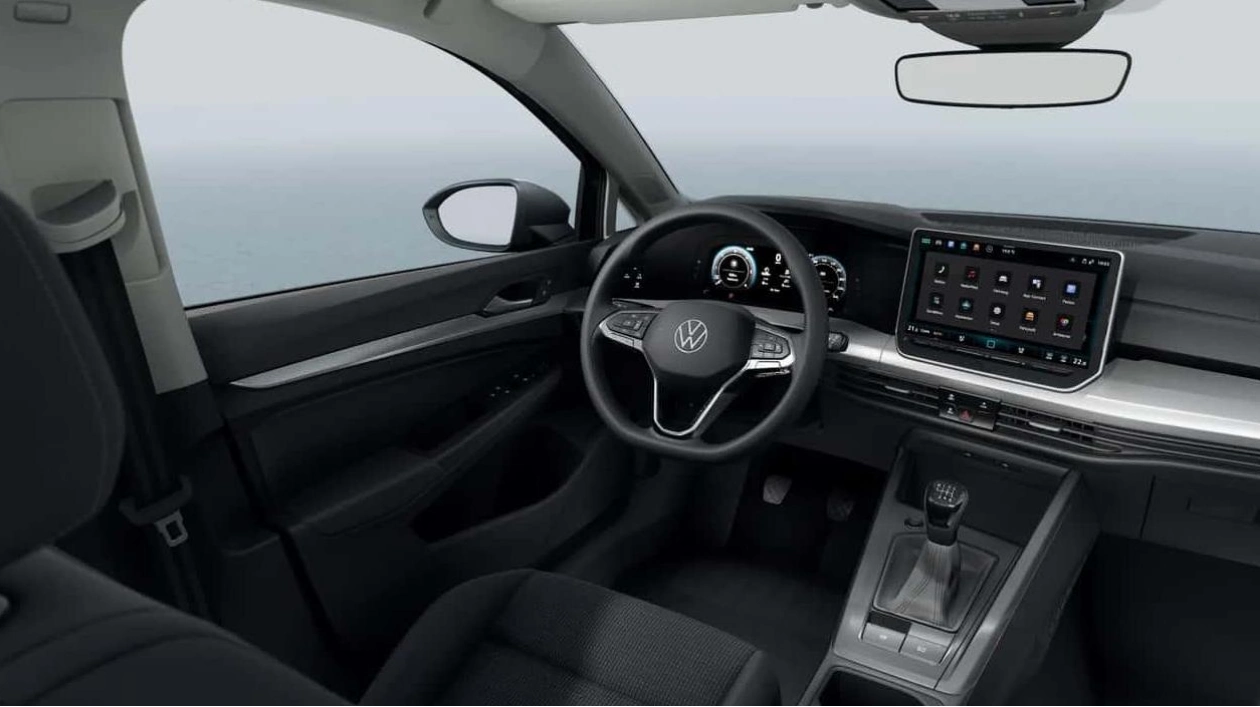When Volkswagen refreshed the Golf earlier this year, it regrettably eliminated the manual gearbox from the GTI and R models. These hot hatches are the only variants of the compact car available in the United States. In contrast, European customers have a plethora of options, including this delightfully basic configuration. Notice anything distinctive? Yes, it features a manual transmission. In addition to the third pedal, this entry-level Golf boasts something not found on the American model—steel wheels, specifically a 15-inch set adorned with stylish hubcaps. Inside, cloth seats are the standard for this base model. However, European buyers can opt for a more upscale Golf with a manual transmission by choosing higher trim levels, up to the R-Line.
Despite the rich assortment of Golf versions in Europe, there is a significant drawback. Cars are considerably more expensive, primarily due to the value-added tax (VAT). In Germany, VAT is 19%, which is why even this standard configuration starts at €28,330, translating to approximately $31,600 at current exchange rates. Volkswagen has not yet released the 2025 Golf GTI pricing for the United States, but the pre-facelift 2024 model costs only about $1,600 more than the latest entry-level Golf in Germany. The most affordable Golf in Europe is powered by a turbocharged 1.5-liter gasoline engine producing 114 horsepower. On the bright side, Volkswagen discontinued the smaller 1.0-liter three-cylinder engine with the recent facelift. Additionally, the GTD, a diesel-powered equivalent of the GTI that was also not available in America, was dropped.
However, the true 'forbidden fruit' is not the hatchback; it's the wagon, a more practical body style offered in Europe, including in the high-performance R guise. This vehicle provides ample space and performance in an all-wheel-drive compact, making it likely the only car you'll ever need. A few more physical controls would be beneficial, but at least the steering wheel on the R-Line, GTI, and R models has reverted to hard buttons, addressing criticisms about the previous sensitive keys. Although this is the final Golf generation with combustion engines, the recent updates likely do not qualify as a mid-cycle facelift. Volkswagen has hinted that the Mk8 could remain in production until 2035, when the European Union plans to ban sales of new cars with harmful emissions. Given that it's only 2024, further tweaks to the Golf to keep it competitive and fresh are plausible.
The fully electric Mk9 is anticipated to debut before the end of the decade. This means Volkswagen will sell two generations of the Golf simultaneously for several years. When the electric model arrives, it will likely replace the ID.3, which ironically was launched in 2019 as a successor to the e-Golf.






